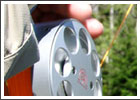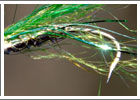John Bottos, Tom Franklin and I started fishing springs (aka chinook or kings) once the pinks turned. The first night we each had one on briefly, but that was enough to suss out where they were, how deep they were holding and what they'd hit. Turns out we were right on the money with the latter according to Haig Brown. In his book, To Know a River, he writes king salmon will respond to a silver bodied number six wet fly once they've adjusted to freshwater and John's silver bodied creations tied with yak hair wings were just the ticket.
Hooking them was the one thing we could do
Campbell River Nookie
Tyee is the name given to chinook salmon over 30 lbs and pretty much everything we hooked was tyee class. Make no mistake, once on these leviathans are in control. You may have the illusion of control, but that's a fleeting notion exemplified in a barrage of bent hooks, broken tippets, split sink tip loops and lost gear.
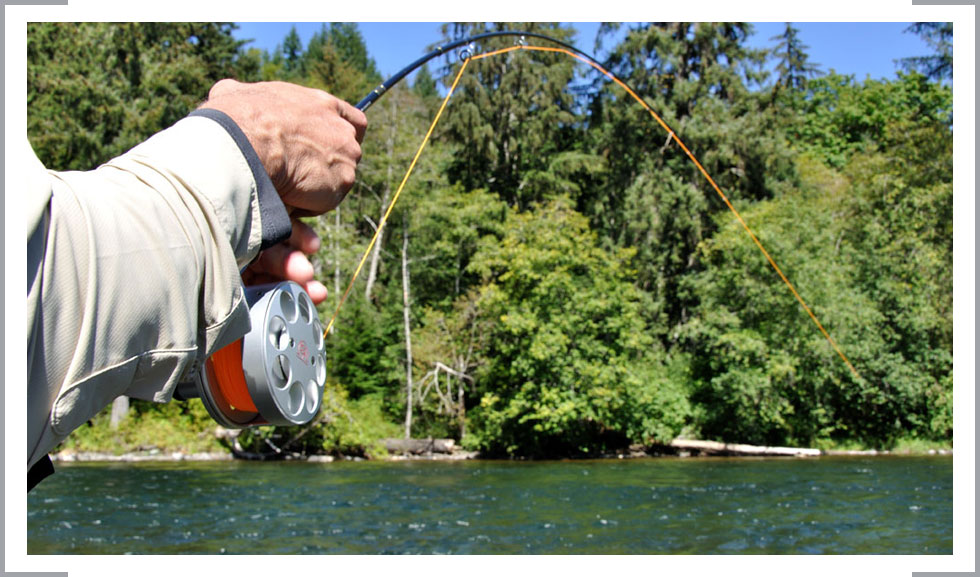
- John and tyee on!

- We threw everything we had at the tyees to no avail. That is until this beauty, dredged up from the bottom of John's fly box, was tied on.
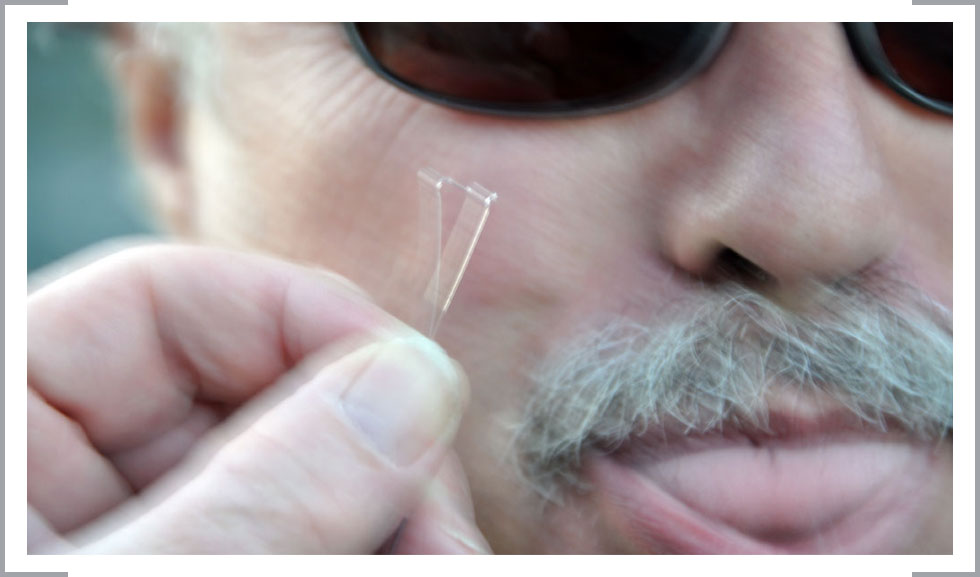
- "My perfection loops don't fail."
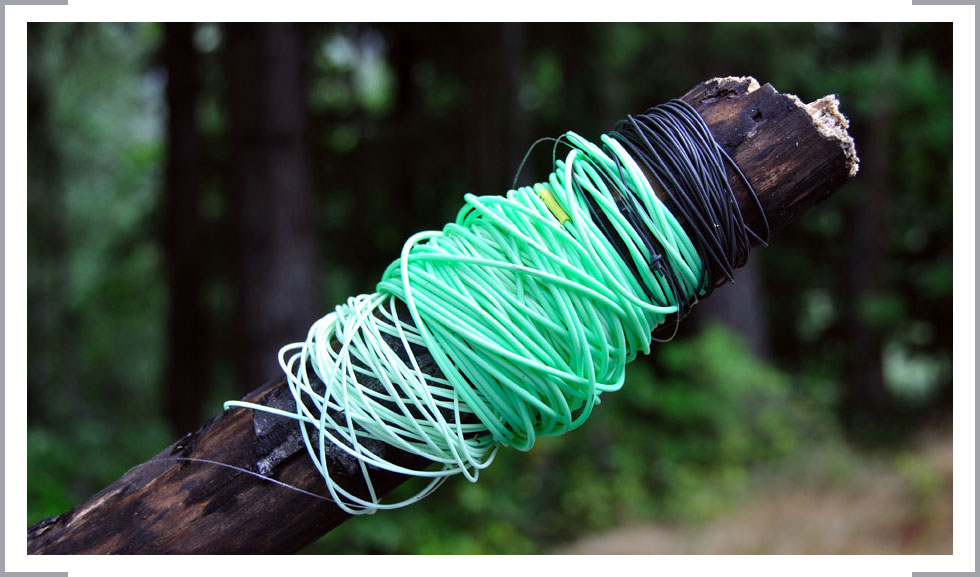
- Back in the tyee game.
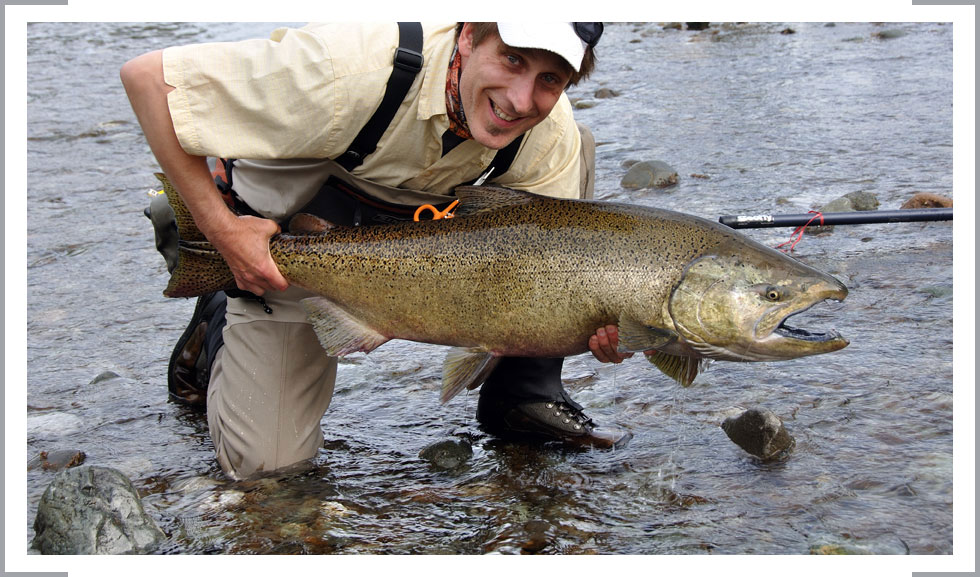
- Tyee on a fly.
well. Landing them was another story altogether. These fish are huge. "Tyee" is the name given to springs over 30 lbs and pretty much everything we hooked was tyee class. Make no mistake, once on these leviathans are in control. You may have the illusion of control, but that's a fleeting notion exemplified in a barrage of bent hooks, broken tippets, split sink tip loops and lost gear.
On the day before John was to fly home, he hooked four tyee. The first he played for 50 minutes before it exited the pool and ran with the rapids. John declined to follow and I don't blame him. In years past, that rock snot infested stretch of theriver has been cruel: dunking him on one occassion and ruining a Sage 9 wt on another.
The next two either straightened his hook or broke his tippet.
We quickly upped tippet test to 20 lb from 15 and went with robust TMC 7999 salmon and steelhead hooks exclusively, as my beloved TMC 9394's, even at 3x heavy, weren't up to the task.
On what would turn out to be the last fish of the trip for John, I cautioned him beforehand about Perfection Loops not being able to stand the strain. Better to Palomar knot the leader directly to the sink tip instead. He laughed that his knots didn't
have that problem. That's him above, third picture from the left, blowing a raspberry at his broken tippet snapped right at the Perfection Loop knot. Priceless!
I took up the tyee challenge once John departed even though I felt undergunned with my 8/9 wt 12' ZSpey rod, 9/10 AirFlo line (30 lb core mono) and 20 lb tippet. I was also experiencing difficulty with my Loop Megaloop reel. I'd tighten the drag and the retrieve would also tighten, so there I'd be fighting both the retrieve and the fish!
Attempting to catch tyee is emotionally draining; a conclusion hammered home by all myfish so far. When I step up to the plate, I question the sanity of the endeavour. The odds are I can't even land the thing. And I may invest well over an hour in this futile pursuit with nothing but busted gear to show for my effort. And that can get very expensive very fast. As always I'm hoping for a Village Idiot, but I have the strange sense all I ever catch are Village Idiots. So, the Village Idiot of Village Idiots it will have to be.
No such luck.
The other day taken down through the rapids into the next pool, I pointed my rod at a runaway spring deep into my backing and the flyline brokeright at the knot, but the knot held. I lost everything: fly, leader, sink tip and line. The nail knot, which overlaps the flyline on the last wrap, cut into itself and severed the line. I switched to an Albright knot instead. I suspect this may not even be enough and I've since gone with Faruk Ekich's line to backing connection.
I purchased another spey line and sink tip ($120) and, as the salesmen was attaching flyline to backing, he noticed the gelspun backing had cut into itself and was tangling on exiting the spool; tyees pull so hard the line is driven down into the very bowels of the spool. He took off some line and
cleared the problem. Or so we thought.
I hooked another monster tyee the next day. It zipped out across to the other side and what did I see when I'm into my backing? Yup, it's jamming and looping about itself again. I thought I could clear it quickly, but ended up taking all the line off (~400m!). I was hoping the fish would remain quiet. It did and was still in the pool, but had wrapped me around a rock. In trying to free the line, the backing cut across stone and I lost everything. Again.
I temporarily gave up this mad obsession with landing a tyee. I spent the following day tying fliesand contemplating a decidedly anticlimatic Plan B: targeting cutties in an adjacent tributary.
Unbeknown to me, Tom had gone down that day and of all things, hooked into my line. He wrapped it around a stick and started winding it in. To his surprise, the spring was still on and he managed to land the thing which he estimated to be 35 to 40 pounds. With line in hand, I was back in the tyee game.
The next day was typical of my tyee forays. That afternoon, I had four tyees on in quick succession, but none landed. And I pretty much lost all my flies I'd tied that morning to them. Two greenish goldenbeauties I had lolling on the surface about ten feet out. I pressured them too much and either the hook pulled out or the line broke when they turned broadside to the current. I had another on around 8:00 pm, fought him well, but in the end he threatened to exit the pool. I pressured him too much and the leader broke. And that was it. I was out of flies.
I spent the next morning at the vise and soon had eight flies in hand newly tied all with silver bodies. Tom was there at the tyee pool before me waiting patiently for the show to begin. And begin did it ever! The first fish I hooked jumped multiple times
and threw the hook after a spectacular aerial effort. I thought I saw wings flapping as it soared close to eight feet in the air, completing two 360 degree somersaults for the WOW factor before reentering the water.
The next fish was to be the one. She took on the swing as did most tyees. I felt a bump and she was on. We got a look at her when she jumped and I was dismayed to see she was a monster. Tom estimated 40 to 50 pounds and I thought it only a matter of time before she went her way. Surprisingly, she settled down after a few anxious moments and held in the main pool out in the current. I kept pressureup and tried to sneak a reel turn in here and there, but she'd take me right back out again. We kept this up for most of the fight. I played her gentle and dared not agitate her unnecessarily. She began to tire around 50 minutes in. I led her gently into the shallows where she scattered pinks willy nilly before her. I swung her by Tom who was ready with his net, which unfortunately, was meant for smaller things. It took about a half dozen swings before Tom was able to trap her head in the net and get half his hand around the caudal appendage. She measured 46 5/8" with a largest girth of 24". The online fish calculator puts her at 41.32 pounds. She
posed for a couple of pics and bowed to the cheers of an audience that had assembled on shore. I held her in the water a long time to make sure she was fully recovered and she swam off smartly when released.
